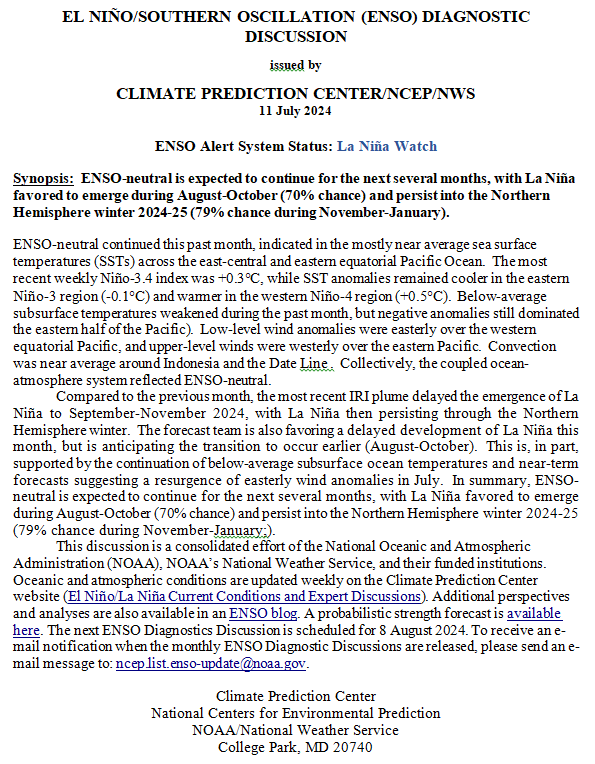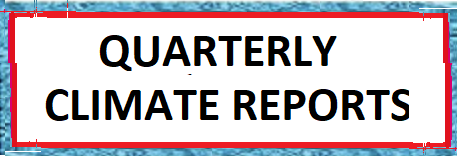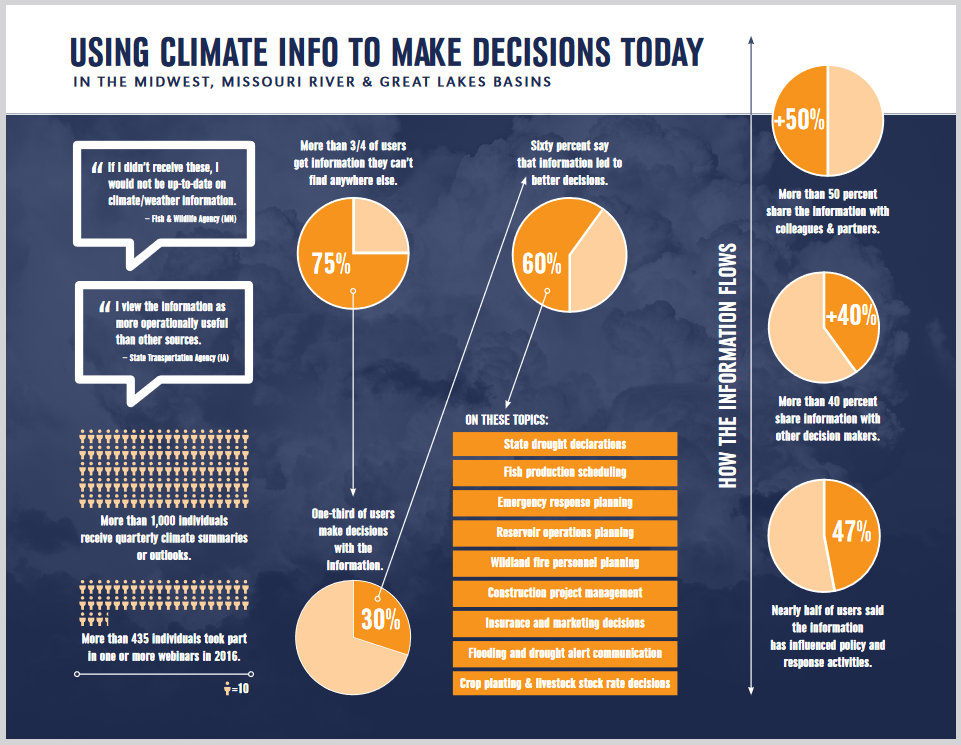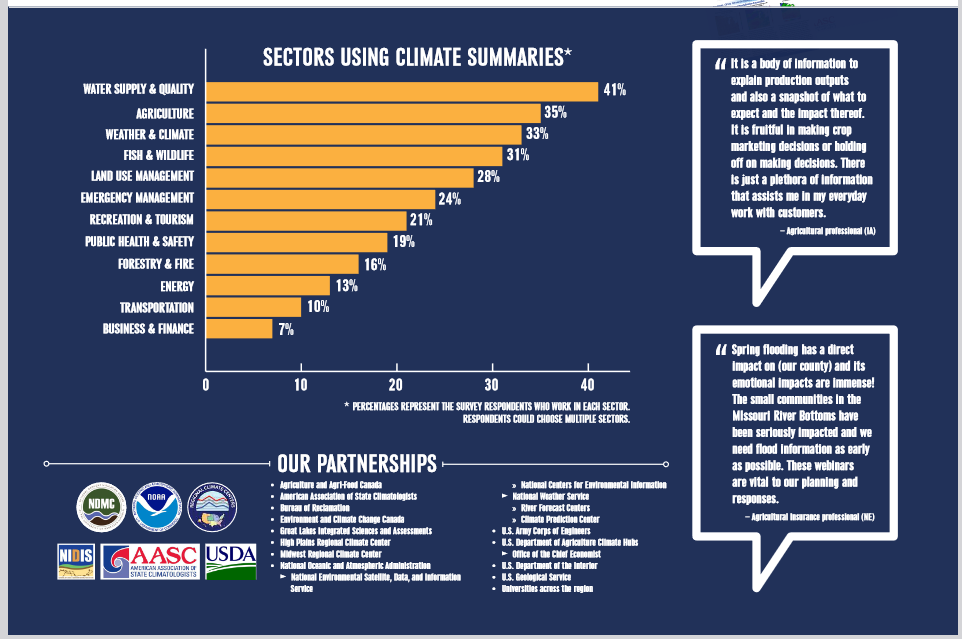Today Through the Fourth Friday (22 to 28 days) Weather Outlook for the U.S. and a Six-Day Forecast for the World: posted July 14, 2024
This article focuses on what we are paying attention to in the next 48 to 72 hours. The article also includes weather maps for longer-term U.S. outlooks and a six-day World weather outlook which can be very useful for travelers.
First the NWS Short Range Forecast. The afternoon NWS text update can be found here after about 4 p.m. New York time but it is unlikely to have changed very much from the morning update. The images in this article automatically update.
Short Range Forecast Discussion
NWS Weather Prediction Center College Park MD
Sun Jul 14 2024
Valid 12Z Sun Jul 14 2024 – 12Z Tue Jul 16 2024….There is a Slight Risk of severe thunderstorms over parts of the
Northern Plains into the Upper Mississippi Valley on Sunday and the
Upper/Middle Mississippi Valley into the Great Lakes on Monday……There is a Slight Risk of excessive rainfall over parts of Middle
Mississippi Valley into the Great Lakes on Monday……Dangerous and record-breaking heat begins to build across the Central
Plains, Mid-Atlantic, and Southeast…A front extending from the Upper Mississippi Valley/Upper Great Lakes to
the Northern Plains will move to the Great Lakes/Middle Mississippi Valley
and trail off into the Northern High Plains by Monday. A wave of low
pressure over the Northern Plains will move northeastward into Ontario,
Canada, by Tuesday, bringing the cold front into the Great Lakes to the
Middle Mississippi Valley/Central Plains. The boundary will produce
showers and severe thunderstorms over the Northern Plains/Upper
Mississippi Valley on Sunday. Therefore, the SPC has issued a Slight Risk
(level 2/5) of severe thunderstorms over parts of the Northern
Plains/Upper Mississippi Valley through Monday morning. The hazards
associated with these thunderstorms are frequent lightning, severe
thunderstorm wind gusts, hail, and a few tornadoes. Further, there is an
increased threat of severe thunderstorm wind gusts of 65 knots and hail
two inches or greater, mainly over parts of the Northern Plains.Also, showers and thunderstorms will develop over parts of the Great Lakes
into parts of the Mid-Atlantic. Furthermore, upper-level energy and
tropical moisture will produce showers and thunderstorms from parts of the
Western Gulf Coast eastward to the Southeast. Additionally, moisture over
the Southwest and diurnal heating will produce late afternoon into late
evening showers and thunderstorms over parts of the Great Basin,
Southwest, and Central/Southern Rockies.On Monday, a wave of low pressure along the front over the Upper Midwest
will pull the front back over parts of the Great Lakes, creating showers
and severe thunderstorms in some parts of the area. Therefore, the SPC has
issued a Slight Risk (level 2/5) of severe thunderstorms over parts of the
Upper/Middle Mississippi Valley into the Great Lakes from Monday through
Tuesday morning. The hazards associated with these thunderstorms are
frequent lightning, severe thunderstorm wind gusts, hail, and a few
tornadoes.Moreover, the showers and thunderstorms will produce heavy rain over parts
of the Middle Mississippi Valley into the Great Lakes. Therefore, the WPC
has issued a Slight Risk (level 2/4) of excessive rainfall over parts of
the Middle Mississippi Valley into the Great Lakes from Monday into
Tuesday morning. The associated heavy rain will create mainly localized
areas of flash flooding, with urban areas, roads, small streams, and
low-lying areas the most vulnerable.Also, upper-level impulses will create showers and thunderstorms over
parts of the Lower Great Lakes into parts of the Mid-Atlantic.
Furthermore, upper-level energy and tropical moisture will produce showers
and thunderstorms from parts of the Southeast.Meanwhile, an upper-level subtropical high over the Great Basin/Southwest
into the Central/Southern Rockies will weaken, allowing heat to expand
over portions of the central and eastern U.S. on Sunday into Tuesday.
Confidence is increasing in extremely dangerous, potentially deadly heat,
particularly for urban areas in the Southeast and East Coast beginning
Monday. Many daily record highs are possible for the East Coast, and
numerous warm overnight lows will provide little relief from the heat
overnight. Heat stress will build rapidly for those without adequate
cooling or hydration.


 >
>






 –
–